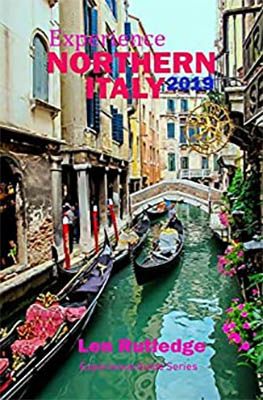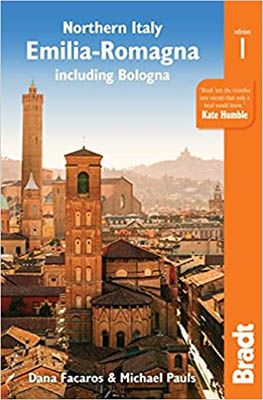We simply cannot get enough of Italy. This country offers something for everyone in every season. In September, we were still in the Dolomites and Tuscany. We did some beautiful hut tours and visited the most beautiful cities.
In October, we wandered through the northeast of the country. There, we visited Venice, the iconic city that was so quiet during the coronavirus. We also visited San Marino, reputedly the oldest republic in the world! In this blog, we take you to the 10 most beautiful coastal towns in northeast Italy.
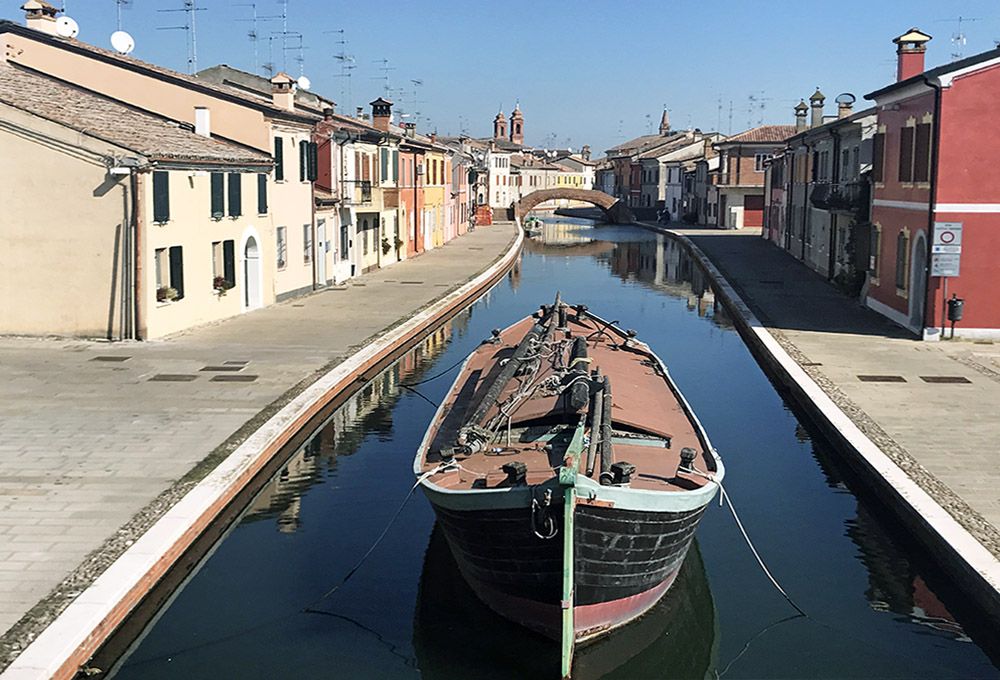
The 10 most beautiful coastal towns in northeast Italy you don’t want to miss
When compiling our top 10, we looked for coastal resorts that are more than just a coastal town. By this we mean that the town itself offers something more than just a coastline. Like 2000 years of history. Or a beautiful city centre with lovely terraces. We start our coastal route along the 10 most beautiful places in the southern part of the region. We end at the border with Slovenia.
Ancona
The large port city of Ancona is almost 2100 years old. During the Second World War, the medieval city centre was bombed. Fortunately, though, there are still many beautiful buildings to admire. One of them is the 14-metre-high triumphal arch from the first century AD. The cathedral on the hill is also worth a visit. From there, you have a beautiful view of the city, the port and the sea.
In the area you have several lovely beaches. One of the most beautiful beaches is at the caves of Passetto. At the foot of the Conero to the southeast of the city, you have more beautiful beaches.
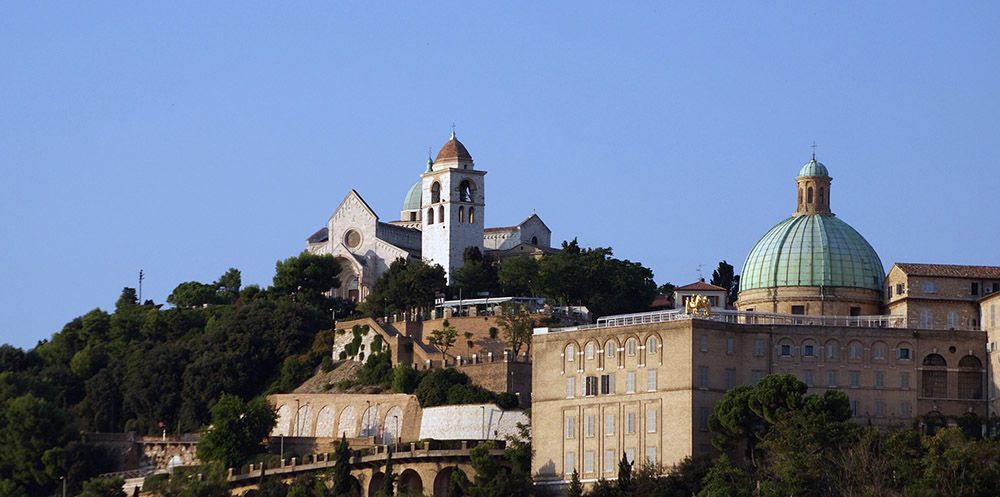
Rimini
The old town of Rimini dates back to Roman times. The sun always seems to shine. Partly because of this, Rimini attracts many young Italian sun worshippers. For this reason, the well-known seaside resort is also called the Salou of Italy. We avoided the beaches and instead went to see the historical sights of the town centre. And there are plenty of those! We went on a particularly interesting, long city walk and afterwards, a delicious meal! In a separate blog we will later on describe the sights of Rimini.
There is another reason why we mention Rimini. From the city, you can go on short trips to some of the most beautiful villages in Italy. For instance, the hilltop medieval villages of Montefiore Conca and San Leo. Both have a spectacular castle and fantastic views. But if you are going to tour around, do not miss the medieval Montegrido and San Giovanni either!
San Marino is also a short drive away from Rimini. The enclave is said to be the oldest republic in the world. We also visited this republic and will soon write a blog about it.
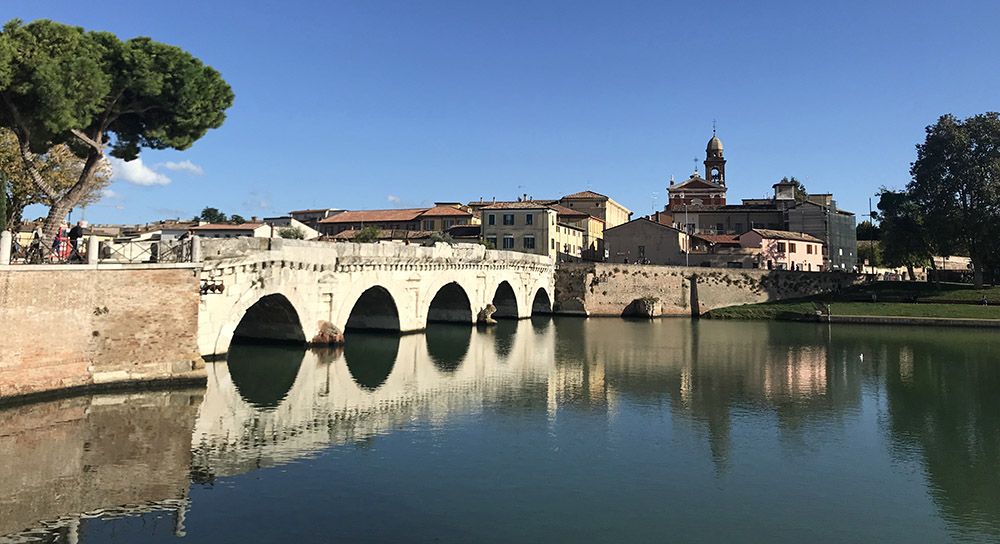
Cesenatico and Cesena
Cesenatico is a charming, historical coastal town. It has a beautiful and luckily not crowded sandy beach, and a beautiful, old harbour. This harbour, the Porto Canale, is still full of historical ships which are part of the Museo della Marineria. You can easily spend a day in this small town. Stroll along the Porto Canale, settle down at the cosy terraces and enjoy the beach!
Cesena, by the way, is located approximately 17 kilometres away from Cesenatico. Not a coastal town, but still worth mentioning. This ancient city was inhabited long before our era. First by the Etruscans, later by the Romans. Few tourists come here, which we think is unfair. There are some sights that are absolutely worth seeing. For example, the 13th century fortress Rocca Malatestiana, the abbey of Santa Maria del Monti and the beautiful Piazza del Popolo are not to be missed!
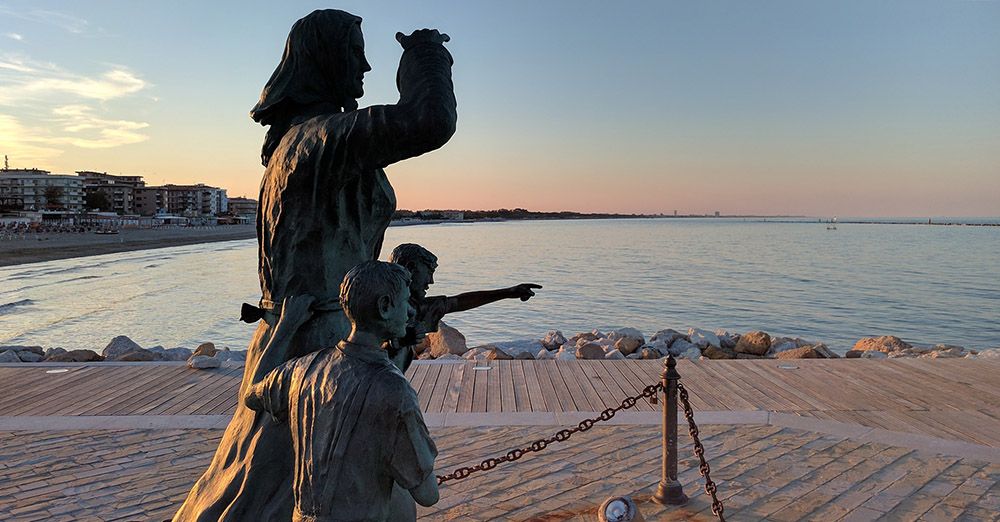
Ravenna
Like Cesena, Ravenna is an ancient city dating back to well before our time. From 402 to 476 AD, the UNESCO city was even the capital of the Western Roman Empire. Many sights still bear witness to this period. After the fall of the Roman Empire, Ravenna became the capital of the Ostrogothic Empire. The mosaic-adorned, early Christian buildings that Ravenna is known for are from this period.
Ravenna was our ‘home base’ during our tour. From here, we went on trips to several other coastal towns, San Marino and Bologna. We also found the town to be a hikers’ paradise. Ravenna is mainly a pedestrian area with restaurants, cafés and bars on every street corner, or hidden in narrow alleys. And for those who miss the beach: in no time you can reach the wooded coast by car. A separate blog about Ravenna will follow soon.
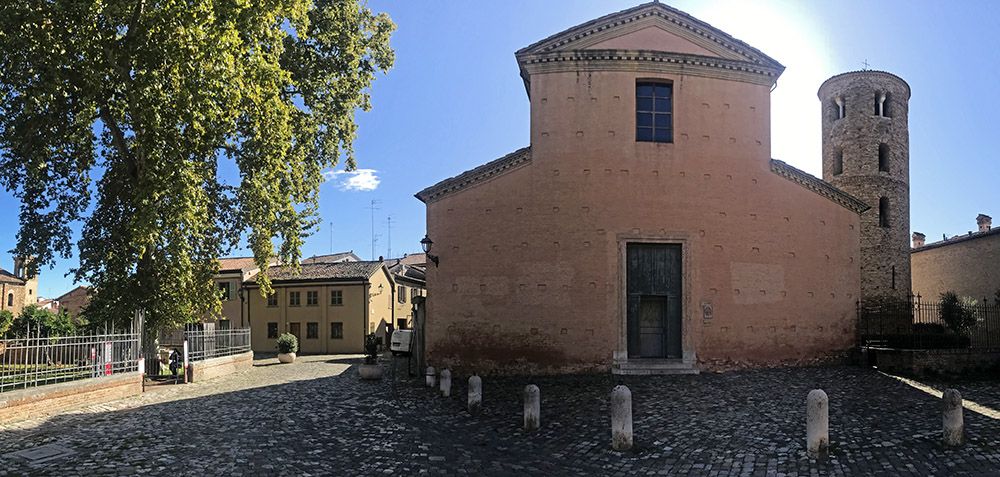
Comacchio
Comacchio is a charming town of Roman origin. It is similar to Venice and Chioggia, but a lot smaller. The historical centre is located on thirteen little islands that are connected by bridges.
The Trepponti (“three bridges”) is the most famous bridge and the symbol of Comacchio. It is a bridge that consists of five large staircases culminating in an Istrian stone floor. It connects the town centre with the navigable Pallotta Canal. But besides the many bridges, Comacchio offers many other interesting buildings. Examples are the cathedral, the abbey of Santa Maria, the 14th century bell tower and some small palaces. Furthermore, the town is known for its (sustainable) eel fishing.
Comacchio is situated in the beautiful nature area of the Po Delta. This area has been on UNESCO’s World Heritage List for a number of years. The large natural park consists of polder landscapes, forests and many lagoons and waterways. You can hike there, but it is probably better to rent a bicycle to explore the park. The Po Delta National Park is a paradise for bird lovers. There are around 300 bird species, including the flamingo!
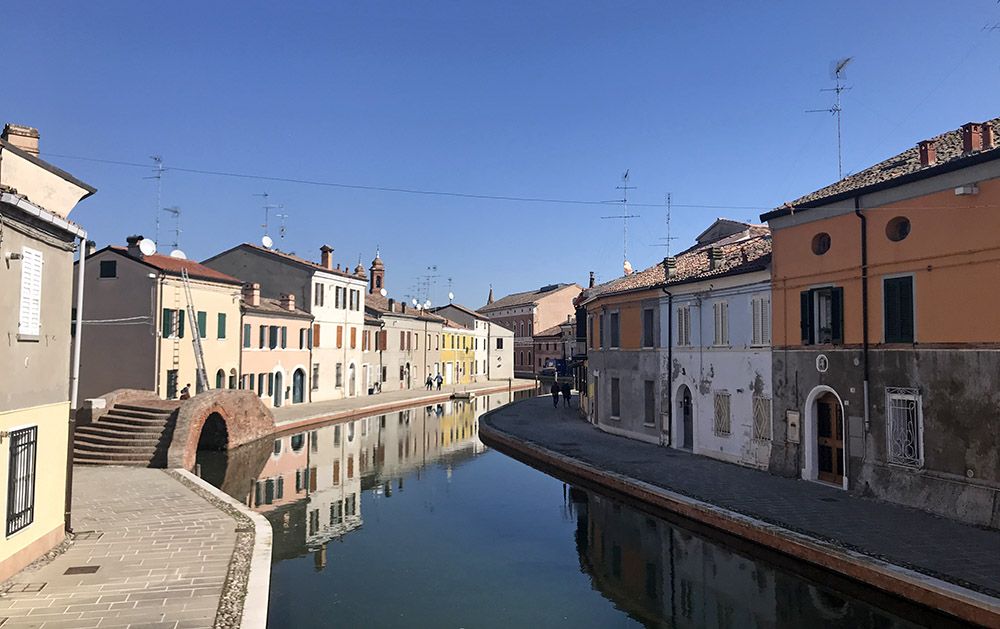
Chioggia
On the way from Comacchio to Venice, you pass Chioggia. This quiet fishing town in the southernmost part of the lagoon of Venice, is a miniature version of Venice. There is also a “Canale Vena” and many characteristic narrow streets called “Calli”. In Chioggia, you will not find the crowds of tourists that you did in Venice in the period before the coronavirus. Instead, you can enjoy a quiet stroll along the many canals and colourful houses.
And Chioggia may look like Venice, but it has its own special character. And interesting sights! Think of the fish market, the early 12th century cathedral and the island of San Domenico. You can reach the island via a footbridge. Also unique is the medieval bell tower from the end of the 11th century, the oldest in the world.
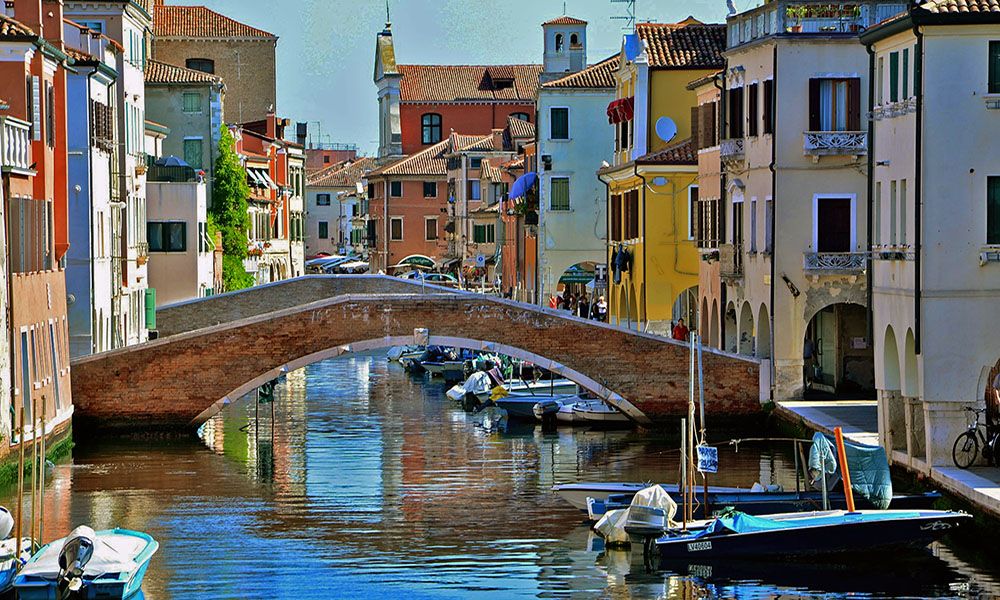
Venice
Venice is one of the most iconic and romantic cities in the world. When you look at the map, the city doesn’t look that big, but it is. Venice consists of several city regions. The most famous is the area that consists of 6 historic districts (‘sestieri’) and 118 islets. The islands are connected by hundreds of bridges. It is these islands, bridges and canals that give Venice its special character.
Walking through Venice is like walking through a large open-air museum. All those old buildings, narrow alleys, beautiful bridges and many canals with gondolas. In one word: fabulous. We have been there twice now. Once in March when it was already busy. The last time was in October at corona time. It was very quiet then for Venetian standards. We found it very impressive and pleasant and would like to go back. A separate blog about Venice will soon follow on our site.
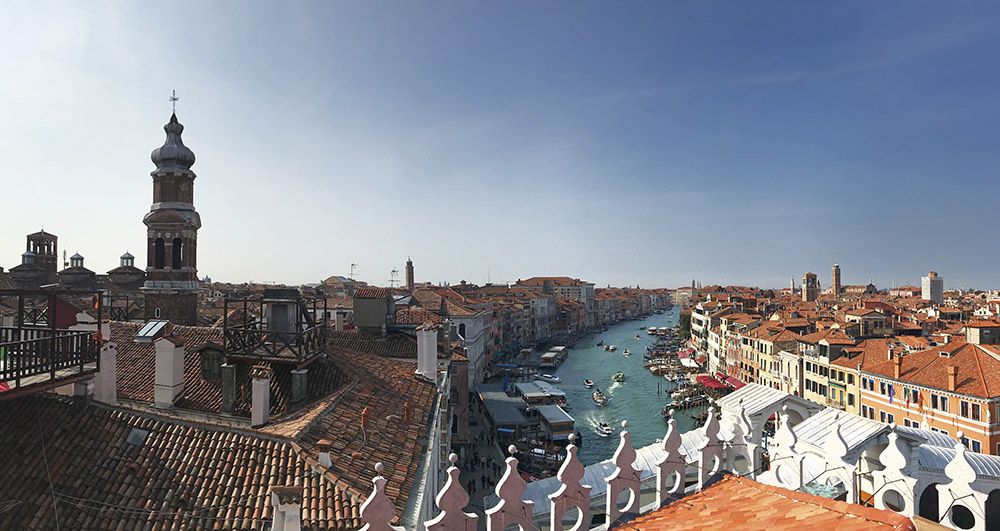
Grado
On an island or peninsula between Venice and Trieste is the beach resort of Grado. It is a nice stopover during a round trip through this part of Italy. For Italians and Austrians, it is an important holiday destination thanks to the kilometres of sandy beaches. We ourselves think that the beautiful, historical centre of Grado is particularly worth visiting.
Just like Venice, medieval Grado consists of many narrow alleys and courtyards. Along the winding alleys, you will find old, charming and well-maintained fishermen’s houses. In addition, there are many cosy terraces and restaurants.
One of the most important sights in the centre is the Basilica di Sant’Eufemia. The cathedral from the 6th century is located at a picturesque little square called Campo dei Patriarchi. Nearby is the equally impressive Basilica di Santa Maria delle Grazie. This church dates from the fourth century. Other important sights are the tower of the ancient fortress and the Santuario di Barbana.
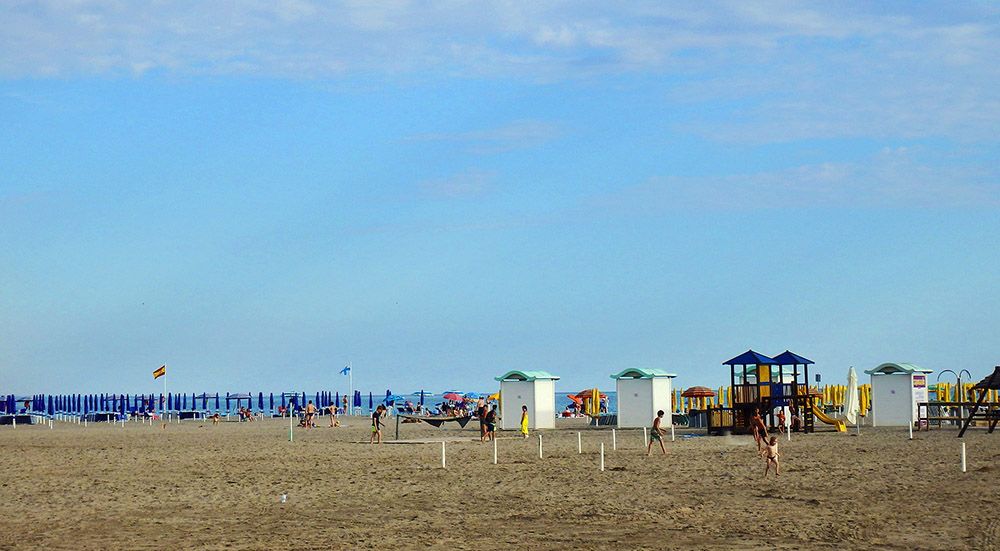
Aquileia
Aquileia is a small, quiet and ancient town, about 10 kilometres north of Grado. During the time of the Roman Empire, Aquileia had one of the largest harbours on the Adriatic Sea. The city then had more than 100,000 inhabitants. Today, it is one of the most important archaeological sites in northern Italy.
The cultural heritage of Aquileia is so important that the basilica and the surrounding archaeological area have been included in the UNESCO World Heritage List. There are Roman ruins, monasteries, museums and a basilica with beautiful mosaics. If you are interested in Roman and medieval history, a visit to Aquileia should not be missing from your tour!
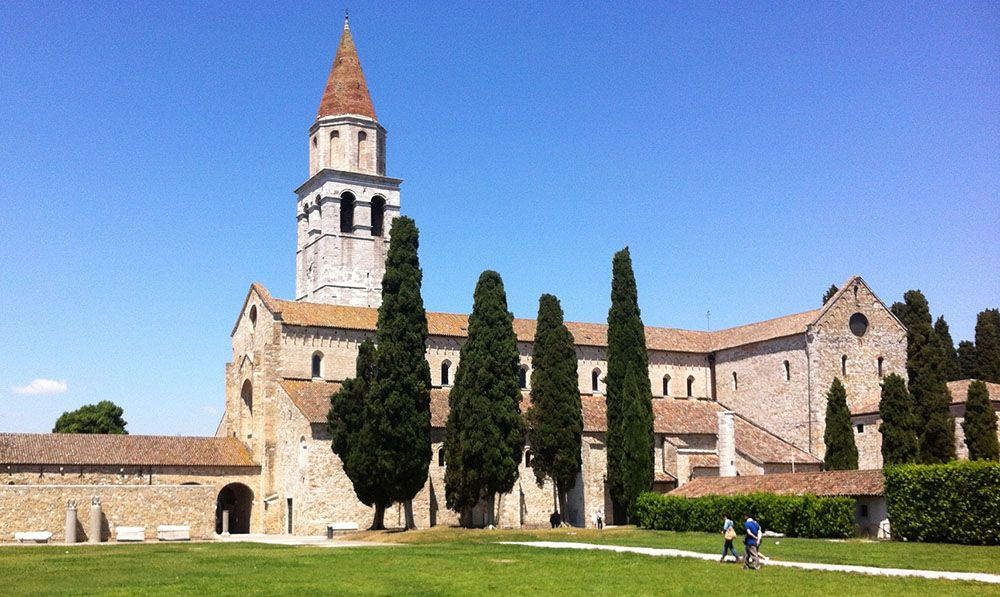
Trieste
The city by the Adriatic Sea that is often overlooked by tourists is Trieste. Unjustly, we think. Due to its proximity to Austria and Eastern Europe, the beautiful city offers an interesting mix of different architectural styles. The cultural heritage of Trieste goes back to the time of the Romans. Among other things, there are excavations of a theatre, a basilica and a gate dating back to before the era of the Roman Empire.
Other important sights are the 19th century Miramare castle and the medieval castle of San Giusto. In addition, there are many special churches that are worth visiting. But above all, the old town itself is interesting enough to spend a day in. Thanks to the many narrow, winding alleys, almost the entire area is only accessible to pedestrians. This in combination with cosy terraces and restaurants makes Trieste an ideal destination for a city trip.
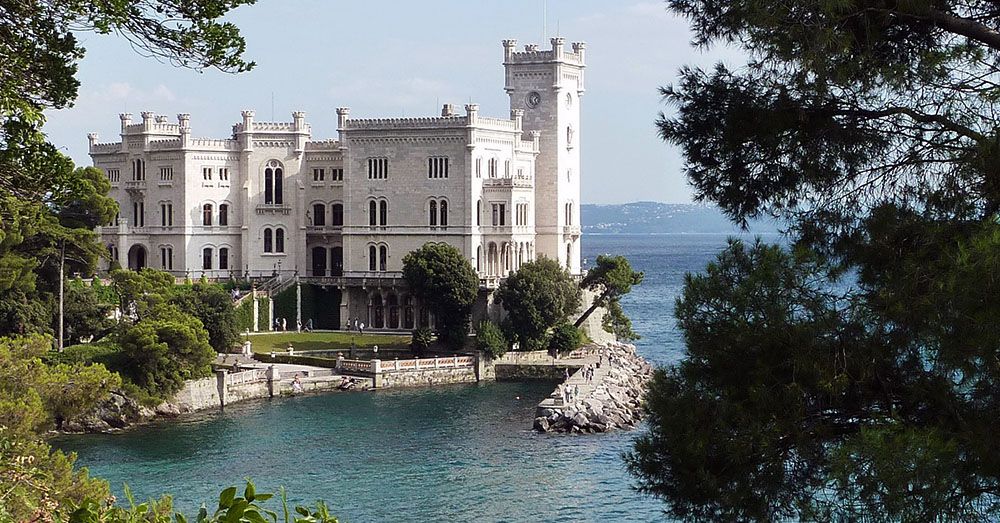
Visiting the most beautiful coastal towns in northeast Italy
Here you will find all the tips for your visit to the most beautiful coastal towns in northeast Italy.
Travelling along the most beautiful coastal resorts in northeast Italy
.
If you want to enjoy the Adriatic coast in northeast Italy the most, go there by car. Public transport can take a long time to get from one beautiful coastal town to another. Besides, by car you can make a photo stop at any time. If you drive on afterwards, you will discover an even more beautiful spot for the perfect picture!
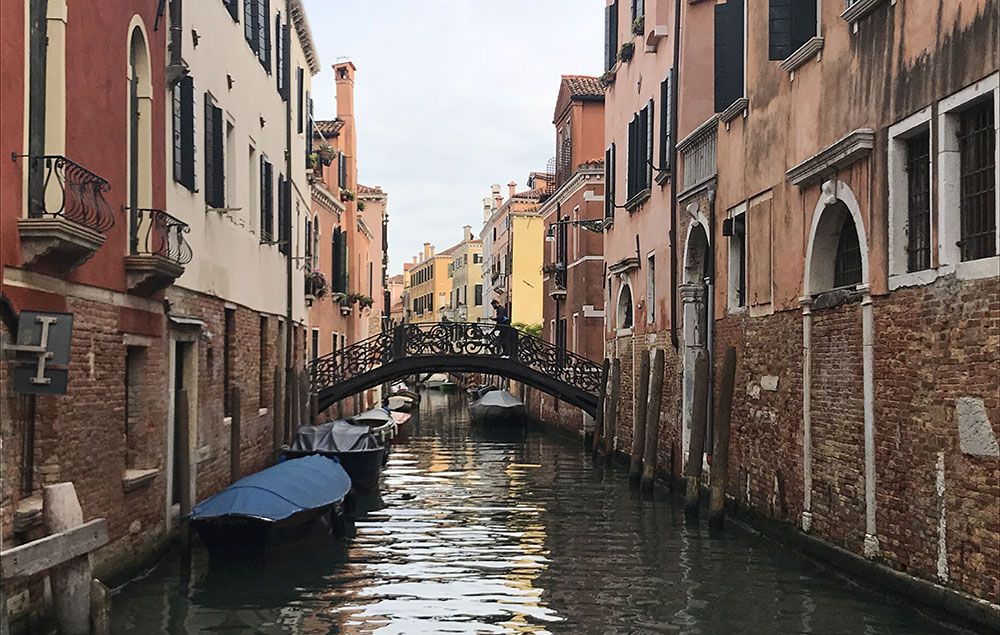
Staying on the coast of northeast Italy
The northeast of Italy has a very wide range of accommodation. For our road trip, we chose two central places. The first one was in Ravenna from where we went on trips to San Marino and other places. We stayed in the comfortable Appartamento Placidus in the centre where we could park our car in the courtyard. Overview of all accommodations in Ravenna.
The second central spot was Mestre, a town just outside Venice. The town itself does not have much to offer, but there is plenty of accommodation for a reasonable price. Besides, it was also handy to park our car there. We then took the tram or bus to Venice. We stayed in the excellent Ca’Rebeka Venice. Overview of all accommodation in Mestre.
Would you like to stay in one of the larger cities? Here you can find the links to the accommodation in the larger coastal cities in northeast Italy:
Best time to visit the most beautiful coastal towns in northeast Italy
The months of April and May are ideal for visiting the coastal resorts in northeast Italy. The temperatures are pleasant and there is less rain than in the summer. Preferably avoid the months June to August. It is very busy in the cities in that period. What’s more, the heat makes you enjoy all the sights a lot less.
Apart from spring, autumn is also a nice time for a road trip along the most beautiful coastal towns. We were there at the beginning of October and had almost only clear skies or slightly cloudy days. During the day, it was around 20 to 23 degrees and even in the evening we could dine outside on the terrace.

